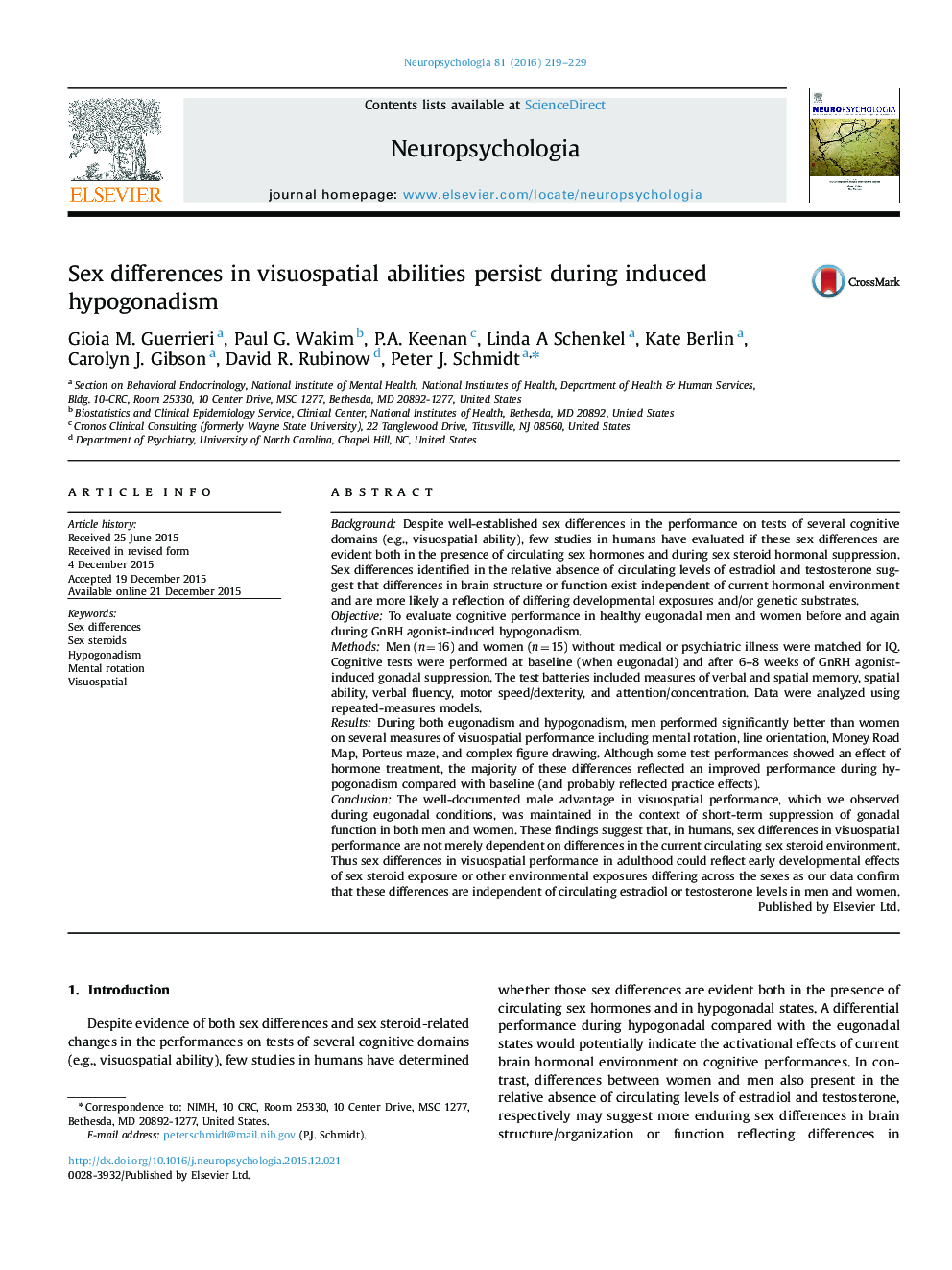| Article ID | Journal | Published Year | Pages | File Type |
|---|---|---|---|---|
| 7319501 | Neuropsychologia | 2016 | 11 Pages |
Abstract
The well-documented male advantage in visuospatial performance, which we observed during eugonadal conditions, was maintained in the context of short-term suppression of gonadal function in both men and women. These findings suggest that, in humans, sex differences in visuospatial performance are not merely dependent on differences in the current circulating sex steroid environment. Thus sex differences in visuospatial performance in adulthood could reflect early developmental effects of sex steroid exposure or other environmental exposures differing across the sexes as our data confirm that these differences are independent of circulating estradiol or testosterone levels in men and women.
Related Topics
Life Sciences
Neuroscience
Behavioral Neuroscience
Authors
Gioia M. Guerrieri, Paul G. Wakim, P.A. Keenan, Linda A Schenkel, Kate Berlin, Carolyn J. Gibson, David R. Rubinow, Peter J. Schmidt,
